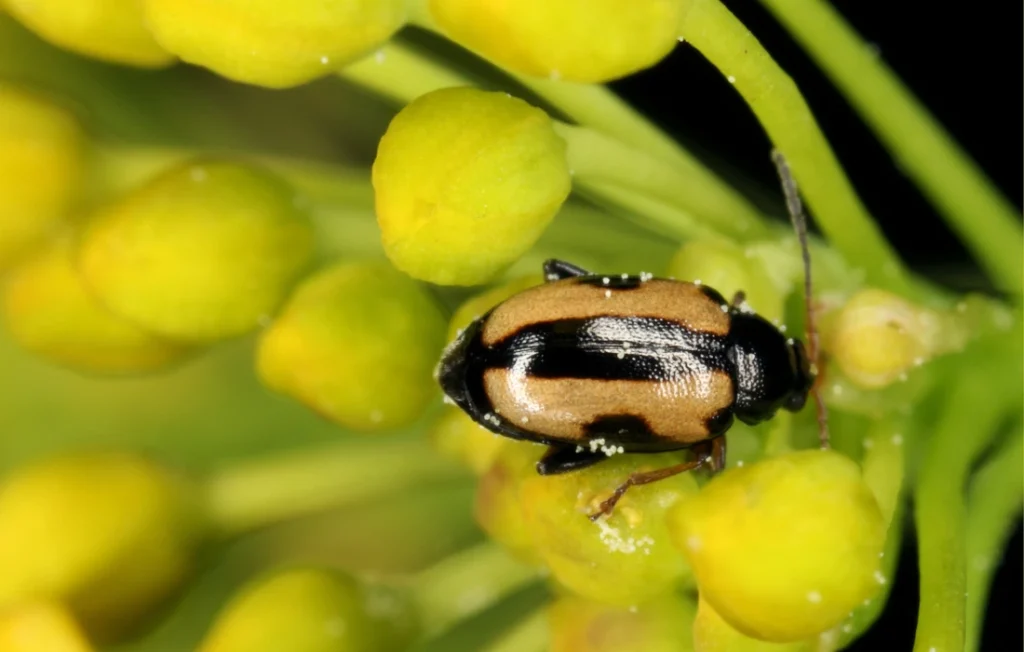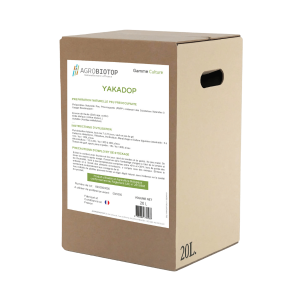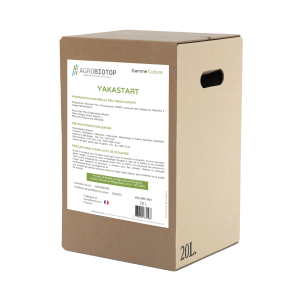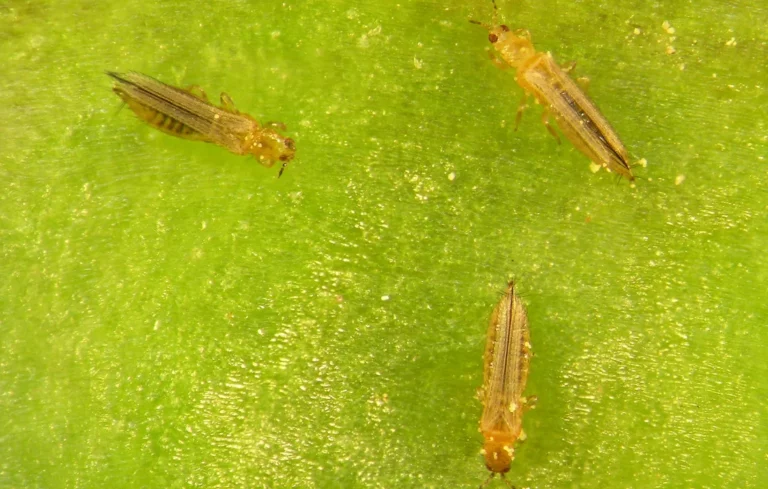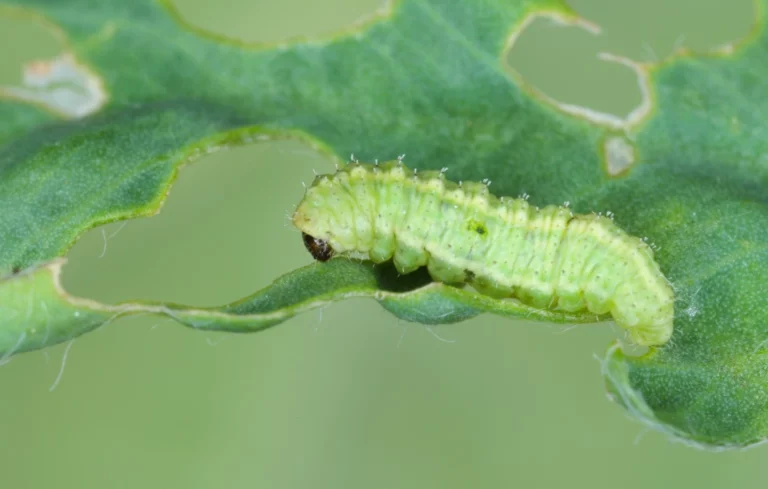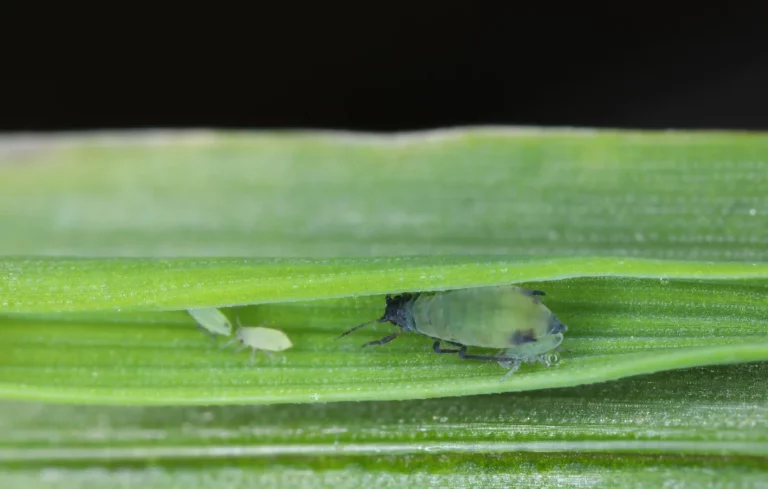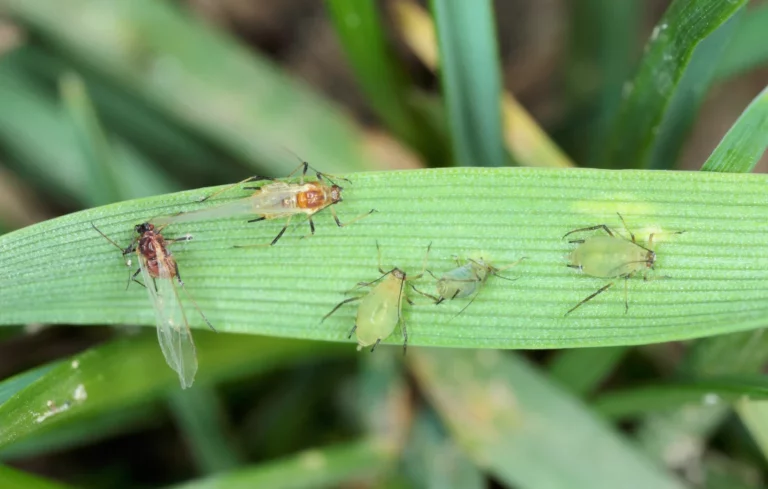The Turnip flea beetle, Phyllotreta nemorum, is a tiny beetle that causes great concern to farmers and market gardeners, particularly those who grow brassicas such as rapeseed but also market garden crops. Despite its modest size, this insect is formidable, attacking young plants at a crucial stage of their development.
But what protective measures should be adopted to combat this pest? And what biological solutions should be applied to repel them? Our explanations and advice
Description of the Turnip flea beetle (Phyllotreta nemorum)
The Turnip flea beetle also named yellow-striped flea beetle, or Phyllotreta nemorum , is a coleopteran insect of the Chrysomelidae family. It is more commonly called the cabbage flea beetle or the small crucifer flea beetle.
- The adult measures 2 to 3 mm in length. It is recognizable by its metallic blue or shiny black color, decorated with yellow longitudinal bands on each elytron.
- The larvae are 5 to 6 mm long, with a rather narrow body, yellow in color, with a black head and legs.
Life cycle of the Turnip flea beetle
There is one annual generation.
Adults spend the winter in the soil and emerge in spring, from April, to feed on the leaves of cruciferous plants, including rapeseed.
After reproduction, eggs are laid on the ground near the collar of plants, and the larvae that hatch feed on the roots and leaves, where they dig galleries. After pupating in the soil, new adults emerge in July-August and continue to damage crops until they go into hibernation in November.
Which crops are threatened by the Turnip flea beetle?
Phyllotreta nemorum is a well-known pest of brassicas which attacks the following crops in particular:
- Rapeseed
- Linen
- Cabbage
- Cauliflower
- Turnip
- Arugula (salad)
- etc.
What damage do Turnip flea beetle cause?
These insects, particularly active during autumn and spring plantings , target young plants at a critical stage of their development. If you grow canola, it is important to understand how these pests can affect your fields, especially during hot and dry weather conditions that favor their proliferation.
Adult Turnip flea beetlecause the most damage to canola crops. The bites caused by these beetles cause visible perforations on the leaves, petioles and cotyledons , weakening young plants. These perforations may seem minor at first glance, but they compromise photosynthesis and growth of the plant, making it more vulnerable to diseases and other environmental stresses .
Massive infestations can even cause the complete disappearance of seedlings, which makes rapeseed cultivation particularly perilous in the absence of effective control measures.
Biological control of these pests therefore relies on increased vigilance from the first appearance of flea beetles, combined with the use of biostimulants and natural preparations from planting to strengthen the resistance of plants. How to combat the small rapeseed flea beetle?
How to fight against the Turnip flea beetle?
The use of biostimulants is the first line of defense against diseases and pests. Some biostimulants and basic substances have insecticidal and repellent effects against flea beetles ( nettle manure ). Their application from sowing at the 1 to 2 leaf stage is recommended.
Agrobiotop solutions against the Turnip flea beetle:
If you would like advice on the application of these biostimulants, please contact us .

